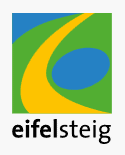Römische Eifelwasserleitung // Grüner Pütz
Nettersheim
An approximately 100-kilometre-long Eifel water pipeline from Nettersheim to Cologne is one of the largest Roman constructions on this side of the Alps. It supplied Cologne, the provincial capital of Lower Germania, with fresh water from the end of the 1st to the 3rd century AD.
It all began near Nettersheim at the "Grüner Pütz" spring. This is also the starting point of the Roman Canal Hiking Trail. You will experience how the water emerges at the foot of a slope and is collected in a seepage pipe. The pipe can still be seen in two places today. The spring water then ran from the seepage pipe into a sedimentation basin - the so-called "Grüne Pütz" - and from there further along the Roman Canal towards Cologne. Good to know: The name "Grüner Pütz" comes from the Latin word "puteus" for water accumulation or puddle.
On the Roman Canal Hiking Trail, you will discover further evidence of one of the most important archaeological monuments in Germany, such as:
- Seepage pipe and "Grüner Pütz" well in Nettersheim.
-Culvert of the Roman canal near Dalbenden
-Roman quarry near Kall
-The Klausbrunnen well near Kallmuth
-Roman reservoir in Eiserfey
-Roman water conduit near Eiserfey
-Aqueduct bridge near Vussem
-Canal master's workshop near Breitenbenden
-Excavation of the Eifel water conduit in Kreuzweingarten





